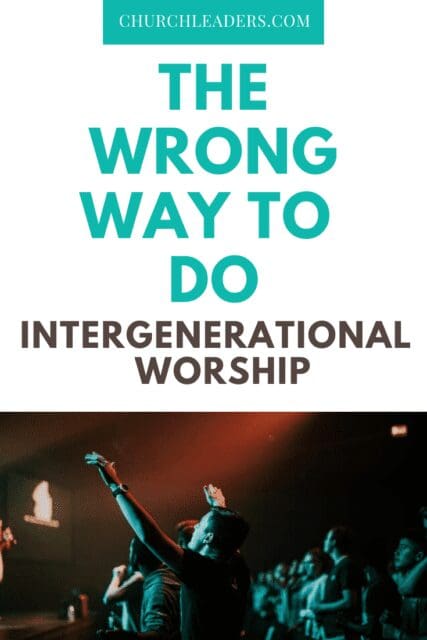3. Developmentally Inappropriate
I’ve actually written entire blog posts on this topic, so I won’t go in depth here but let me just share this: Development not just about what children can understand in terms of words and concepts; it’s about what they can learn socially, emotionally and in our case, spiritually.
Many developmental theories and constructs encourage children and adults to learn, play, and yes, worship, together. For example, Vygotsky’s Zone of Proximal Development explains that young children need to be in close proximity to older people who have “mastered” the tasks that they are learning. Fowler’s theory of Faith Developmenttells us that children will build their first ideas about their faith from the impressions of what they see and hear in church.
The truth is if we look at the broad spectrum of developmental theories including these and others not mentioned here like Erikson’s stages of psychosocial development or Kohlberg’s stages of moral development, we can find space in all of them for including all ages in contexts of intergenerational worship and ministry.
4. A Disruption
Often a concern raised is that children especially don’t get anything out of church and everyone will be forced to spend their whole service shushing kids. I read an incredible article in The Federalist, of all places, about this, and I’ve had a lot of conversations with parents, caregivers and other congregation members about this concern.
I’m not about to say that children will get the same thing out of church that adults do; that would be ridiculous. I do think it’s important to consider what kids do get out of church (for more on that, click here) but also just as important to realize that kids are kids. They will wiggle and squirm and giggle and turn, but is that really such a huge issue that we shouldn’t offer times for the whole congregation to worship together?
It didn’t seem to be an issue for Jesus when He “called a little child to him, and placed the child among them. And he said: ‘Truly I tell you, unless you change and become like little children, you will never enter the kingdom of heaven. Therefore, whoever takes the lowly position of this child is the greatest in the kingdom of heaven. And whoever welcomes one such child in my name welcomes me.’”
5. A New Fad
Actually, it’s exactly the opposite. The segregation of ages within the church is a fairly new practice in American church history. Most of the time it gets traced back to the start of ministries on college campuses on post WWII America where it became apparent that there was a need for age-specific ministry. Churches began to recognize the need to create space to address the developmental concerns of each age group. Through time that progressed into less of a “both/and” model and more of an “either/or” model. In other words, instead of times of both age-specific and intergenerational gatherings, it became one or the other with little to no opportunity or encouragement to do both.


